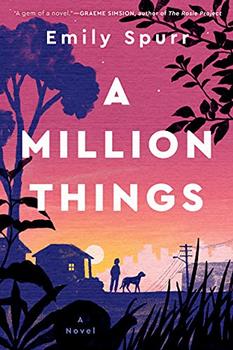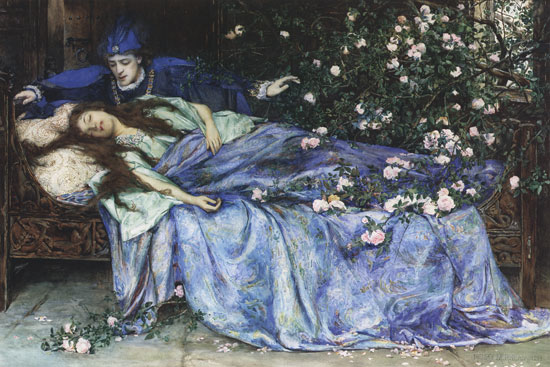Summary | Excerpt | Reading Guide | Reviews | Beyond the Book | Read-Alikes | Genres & Themes | Author Bio

This article relates to A Million Things
 In A Million Things by Emily Spurr, 10-year-old Rae recalls her mother reading her the story of Briar Rose. Briar Rose, better known as Sleeping Beauty, is a popular fairy tale character. While many people may be familiar with recent versions of her story, including the 1959 animated Disney adaptation, the tale is centuries old and has gone through multiple incarnations, some of them much more sinister than the child-friendly version told today.
In A Million Things by Emily Spurr, 10-year-old Rae recalls her mother reading her the story of Briar Rose. Briar Rose, better known as Sleeping Beauty, is a popular fairy tale character. While many people may be familiar with recent versions of her story, including the 1959 animated Disney adaptation, the tale is centuries old and has gone through multiple incarnations, some of them much more sinister than the child-friendly version told today.
The story began to gain its current foothold on popularity in the 1630s, with a collection of tales by Giambattista Basile, based on oral folk narratives taken from areas of present-day Italy. Basile's collection included fairy tale characters such as Cinderella, Rapunzel and Sleeping Beauty. While the story of Sleeping Beauty is now generally known as a romantic tale about a princess who falls into a deep sleep and is awakened by the kiss of a handsome prince, Basile's version, "Sun, Moon and Talia," features infidelity, sexual violence and (at least theoretical) cannibalism.
In this version, a princess, Talia, is rendered lifeless, though not exactly dead, by a splinter under her fingernail. In his grief, her father locks her away in a castle. A hundred years later, she is raped by a king who discovers her there. She later gives birth to two children, a boy and a girl. One of the infants sucks the splinter out of Talia's finger, reviving her. The king's wife, not happy with this turn of events and set on ensuring that Talia and her children perish, plots to have them thrown into a cauldron, cooked and served to the king to eat. However, the king catches his wife in the act, prompting her to throw herself into the cauldron instead.
The next widespread version was penned by the French writer Charles Perrault, considered the father of fairy tales. In 1697, Perrault published the collection of stories now known as "Tales of Mother Goose." Like Basile, he rewrote folk narratives, in his case to make them appropriate for entertaining the French aristocracy. In the case of "The Sleeping Beauty in the Woods," the result was a less violent and more romantic version of the tale, which introduced the character of a fairy who foretells the princess's fate, as well as a prince who rescues the sleeping heroine from her slumber.
When the Brothers Grimm recorded their famous collection of fairy tales in Germany in the early 1800s, they put their own spin on Perrault's version to create "Briar Rose." One significant shift in the Brothers Grimm retelling is that the prince and princess are married at the end of the story and, as is now well known, live happily ever after.
Aside from the versions above, the tale of Briar Rose/Sleeping Beauty has been told through a ballet by Tchaikovsky, a story by Italo Calvino, novels by Robin McKinley and Neil Gaiman, and many other works of literature and art. The story has also been adapted for the screen numerous times beyond the animated Disney rendering, including in a movie by the French director Catherine Breillat, and the live-action Disney film Maleficent. Some retellings seek to put a feminist or otherwise socially conscious slant on the tale. Jane Yolen's young adult novel Briar Rose works the German version of the tale into a story about the Holocaust.
Sleeping Beauty by Henry Meynell Rheam, 1899
Filed under Books and Authors
![]() This "beyond the book article" relates to A Million Things. It originally ran in September 2021 and has been updated for the
August 2021 paperback edition.
Go to magazine.
This "beyond the book article" relates to A Million Things. It originally ran in September 2021 and has been updated for the
August 2021 paperback edition.
Go to magazine.
Your guide toexceptional books
BookBrowse seeks out and recommends the best in contemporary fiction and nonfiction—books that not only engage and entertain but also deepen our understanding of ourselves and the world around us.